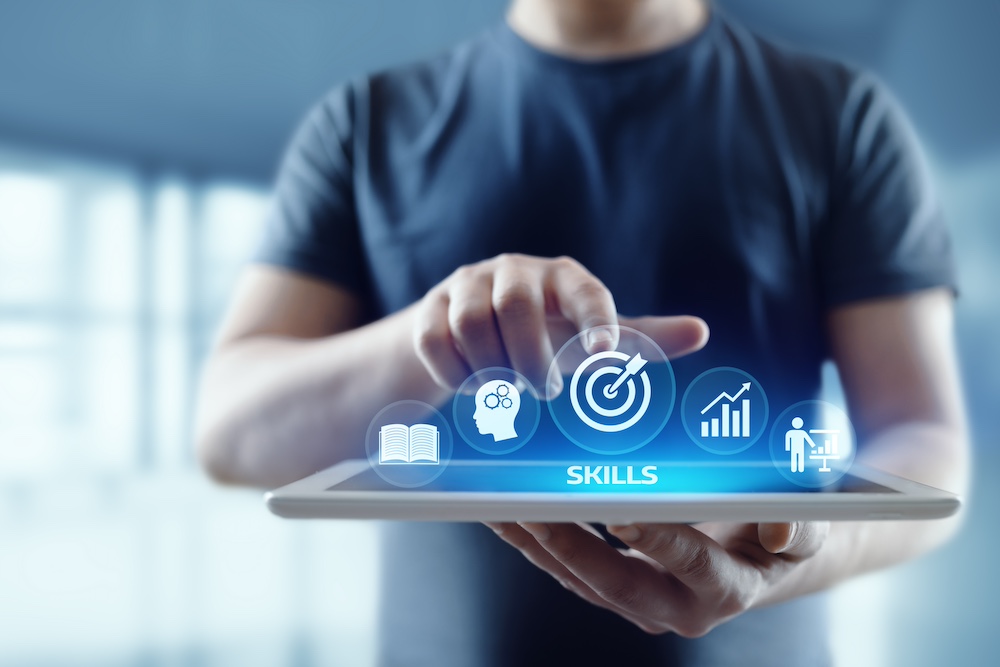Artificial intelligence and automation have been transformative and revolutionized different aspects of our day-to-day lives. Artificial Intelligence (AI) uses computer systems capable of doing tasks requiring human intelligence. These tasks include natural language understanding, problem-solving, and decision-making. On the other hand, automation is using technology to do repetitive tasks, thus requiring minimal or no manual intervention. The use of AI and automotive technologies has shaped and is continuing to shape the future of the workspace through enhancing productivity, efficiency, and innovation.
History of AI and Automation
The use of AI can be dated back to the 20th century, with early milestones that involved the development of expert systems, neural networks, and symbolic reasoning. Researchers then explored the possibilities of inventing machines that could mimic human intelligence. AI has developed tremendously, and its application is found in different fields. Natural Language Processing (NLP) is an AI system that can understand and generate human language. Through NLP, we now have chatbots and virtual assistants that can translate any language with only a press of a button. Machine Learning systems (MLS) and Computer Vision are different AI systems used to learn data and make predictions in autonomous vehicles and facial recognition.
Current uses of AI in the workspace
Currently, the adoption of AI in the workforce is already revolutionary. The following are some ways AI is being used in the workforce.
Automation of workflows – Different industries are now using Artificial Intelligence, such as ChatGPT and Bard, to automate their workflows. In the long run, this helps save time and boosts their productivity. AI is helping workers in different fields as it can generate quiz questions and lesson plans, write listings for luxury real estate, assist in recruiting efforts, draft social media posts, and develop code.
Ad Targeting and Personalized Product Recommendations – companies are now using AI algorithms to analyze customer behaviors and preferences when creating advertisement posts for their products. This helps them create unique ads that are eye-catching to their market, as they are practical and provide personalized product recommendations.
Content creation and social media scheduling – The use of AI in the workforce has significantly impacted how social media content is created and scheduled to enhance productivity through creating engaging content. Even though the use of AI can sound appealing, it lacks the human spark thus struggling to provide ideas that are innovative and authentic.
Healthcare– In the medical field, AI is being used to aid in diagnostics, drug discovery, and personalized treatment plans. Radiologists use AI to detect anomalies in medical images. This has revolutionized the field, making it easier to detect diseases earlier than before.
Transportation – In transportation, self-driving cars such as Teslas rely only on AI to navigate and avoid collisions. The use of this technology makes machines perform some tasks previously done by humans and can even go beyond what most humans.
Challenges and opportunities of AI use
As with other transformative technologies, the spread of AI and automation is accompanied by significant challenges and opportunities. From the perspective of the evolving workforce: Impact on Job Roles and Skills The adoption of AI and automation has significant implications for the nature of job roles and the skills required to thrive in the changing workforce – for example, job displacement is likely as routine and repetitive tasks are increasingly automated through AI and automation. Jobs such as data entry, cashiering, and fundamental customer service roles are all under threat.
Meanwhile, new skills are required for human workers to thrive. Proficiency in data analysis and programming and a detailed understanding of AI models will become new core skills for the workforce of tomorrow. Creativity and critical thinking are only likely to become even more valuable. AI is already highly efficient at tasks such as data processing – and the advent of ad AI writing anything from news stories to music and beyond is creating a world in which this technology can do ‘manual’ work as well. Yet AI can’t come close to human creativity, empathy, or complex problem-solving skills.
Upskilling and Reskilling -Workers need to acquire new skills. Proficiency in data analysis, programming, and understanding AI models becomes essential. Ethical concerns are another challenge. AI systems can inherit biases in training data, leading to discriminatory decision-making.
AI systems can be used to augment human skill to act as a ‘super-sense.’ For example, AI has the potential to perform very rapid and accurate speech recognition – at least for native speakers in the most widely spoken languages. A more advanced form of Siri or Alexa could act as a future super–translator and support a raft of other voice-activated forms of communication. The same technology can help democratize education, making content available to people without the teaching resources you receive in more affluent, more privileged sections. Adaptive learning technology – in which algorithms tailor educational courses in real-time according to the needs of the student – is already starting to appear, delivering the personalized content needed to make this happen.
Humans and AI can collaborate rather than AI replacing humans through using Augmented Intelligence. AI, when used correctly, usually enhances human capabilities. For example, doctors use AI to help identify diseases. Through the use of AI systems at work it will greatly help in decision systems by providing insights, with humans ultimately making the final decisions.
Companies should invest in AI education and training for employees. This will ensure the employees know current market trends and maximum the efficiency in their jobs. Organizations must be agile and quickly adapt to stay competitive in the AI era. Build a company culture that encourages change and experimentation by ensuring they adapt to innovation.
AI is on track to be a significant boon for workers with disabilities. We’ve seen the demonstration of machine-learning tools that could enable people with disabilities to perform previously implausible work, from algorithm-based speech-to-text and text-to-speech tools to those that rapidly translate information into American Sign Language. These assistive technologies tear down barriers for workers with disabilities and enable them to embrace autonomy and inclusion. Additionally, as the latest breakthrough in large language models expands the human capacity for real-time, multilingual closed captioning and language translation, all people can access an even greater diversity of information. Due to the complexity of AI and automation one will have to move from a declining career to a growing one and, in some cases, a new career.
Artificial intelligence and automation have been transformative and revolutionized different aspects of our day-to-day lives. Artificial Intelligence (AI) uses computer systems capable of doing tasks requiring human intelligence. These tasks include natural language understanding, problem-solving, and decision-making. On the other hand, automation is using technology to do repetitive tasks, thus requiring minimal or no manual intervention. The use of AI and automotive technologies has shaped and is continuing to shape the future of the workspace through enhancing productivity, efficiency, and innovation.
History of AI and Automation
The use of AI can be dated back to the 20th century, with early milestones that involved the development of expert systems, neural networks, and symbolic reasoning. Researchers then explored the possibilities of inventing machines that could mimic human intelligence. AI has developed tremendously, and its application is found in different fields. Natural Language Processing (NLP) is an AI system that can understand and generate human language. Through NLP, we now have chatbots and virtual assistants that can translate any language with only a press of a button. Machine Learning systems (MLS) and Computer Vision are different AI systems used to learn data and make predictions in autonomous vehicles and facial recognition.
Current uses of AI in the workspace
Currently, the adoption of AI in the workforce is already revolutionary. The following are some ways AI is being used in the workforce.
Automation of workflows – Different industries are now using Artificial Intelligence, such as ChatGPT and Bard, to automate their workflows. In the long run, this helps save time and boosts their productivity. AI is helping workers in different fields as it can generate quiz questions and lesson plans, write listings for luxury real estate, assist in recruiting efforts, draft social media posts, and develop code.
Ad Targeting and Personalized Product Recommendations – companies are now using AI algorithms to analyze customer behaviors and preferences when creating advertisement posts for their products. This helps them create unique ads that are eye-catching to their market, as they are practical and provide personalized product recommendations.
Content creation and social media scheduling – The use of AI in the workforce has significantly impacted how social media content is created and scheduled to enhance productivity through creating engaging content. Even though the use of AI can sound appealing, it lacks the human spark thus struggling to provide ideas that are innovative and authentic.
Healthcare– In the medical field, AI is being used to aid in diagnostics, drug discovery, and personalized treatment plans. Radiologists use AI to detect anomalies in medical images. This has revolutionized the field, making it easier to detect diseases earlier than before.
Transportation – In transportation, self-driving cars such as Teslas rely only on AI to navigate and avoid collisions. The use of this technology makes machines perform some tasks previously done by humans and can even go beyond what most humans.
Challenges and opportunities of AI use
As with other transformative technologies, the spread of AI and automation is accompanied by significant challenges and opportunities. From the perspective of the evolving workforce: Impact on Job Roles and Skills The adoption of AI and automation has significant implications for the nature of job roles and the skills required to thrive in the changing workforce – for example, job displacement is likely as routine and repetitive tasks are increasingly automated through AI and automation. Jobs such as data entry, cashiering, and fundamental customer service roles are all under threat.
Meanwhile, new skills are required for human workers to thrive. Proficiency in data analysis and programming and a detailed understanding of AI models will become new core skills for the workforce of tomorrow. Creativity and critical thinking are only likely to become even more valuable. AI is already highly efficient at tasks such as data processing – and the advent of ad AI writing anything from news stories to music and beyond is creating a world in which this technology can do ‘manual’ work as well. Yet AI can’t come close to human creativity, empathy, or complex problem-solving skills.
Upskilling and Reskilling -Workers need to acquire new skills. Proficiency in data analysis, programming, and understanding AI models becomes essential. Ethical concerns are another challenge. AI systems can inherit biases in training data, leading to discriminatory decision-making.
AI systems can be used to augment human skill to act as a ‘super-sense.’ For example, AI has the potential to perform very rapid and accurate speech recognition – at least for native speakers in the most widely spoken languages. A more advanced form of Siri or Alexa could act as a future super–translator and support a raft of other voice-activated forms of communication. The same technology can help democratize education, making content available to people without the teaching resources you receive in more affluent, more privileged sections. Adaptive learning technology – in which algorithms tailor educational courses in real-time according to the needs of the student – is already starting to appear, delivering the personalized content needed to make this happen.
Humans and AI can collaborate rather than AI replacing humans through using Augmented Intelligence. AI, when used correctly, usually enhances human capabilities. For example, doctors use AI to help identify diseases. Through the use of AI systems at work it will greatly help in decision systems by providing insights, with humans ultimately making the final decisions.
Companies should invest in AI education and training for employees. This will ensure the employees know current market trends and maximum the efficiency in their jobs. Organizations must be agile and quickly adapt to stay competitive in the AI era. Build a company culture that encourages change and experimentation by ensuring they adapt to innovation.
AI is on track to be a significant boon for workers with disabilities. We’ve seen the demonstration of machine-learning tools that could enable people with disabilities to perform previously implausible work, from algorithm-based speech-to-text and text-to-speech tools to those that rapidly translate information into American Sign Language. These assistive technologies tear down barriers for workers with disabilities and enable them to embrace autonomy and inclusion. Additionally, as the latest breakthrough in large language models expands the human capacity for real-time, multilingual closed captioning and language translation, all people can access an even greater diversity of information. Due to the complexity of AI and automation one will have to move from a declining career to a growing one and, in some cases, a new career.





